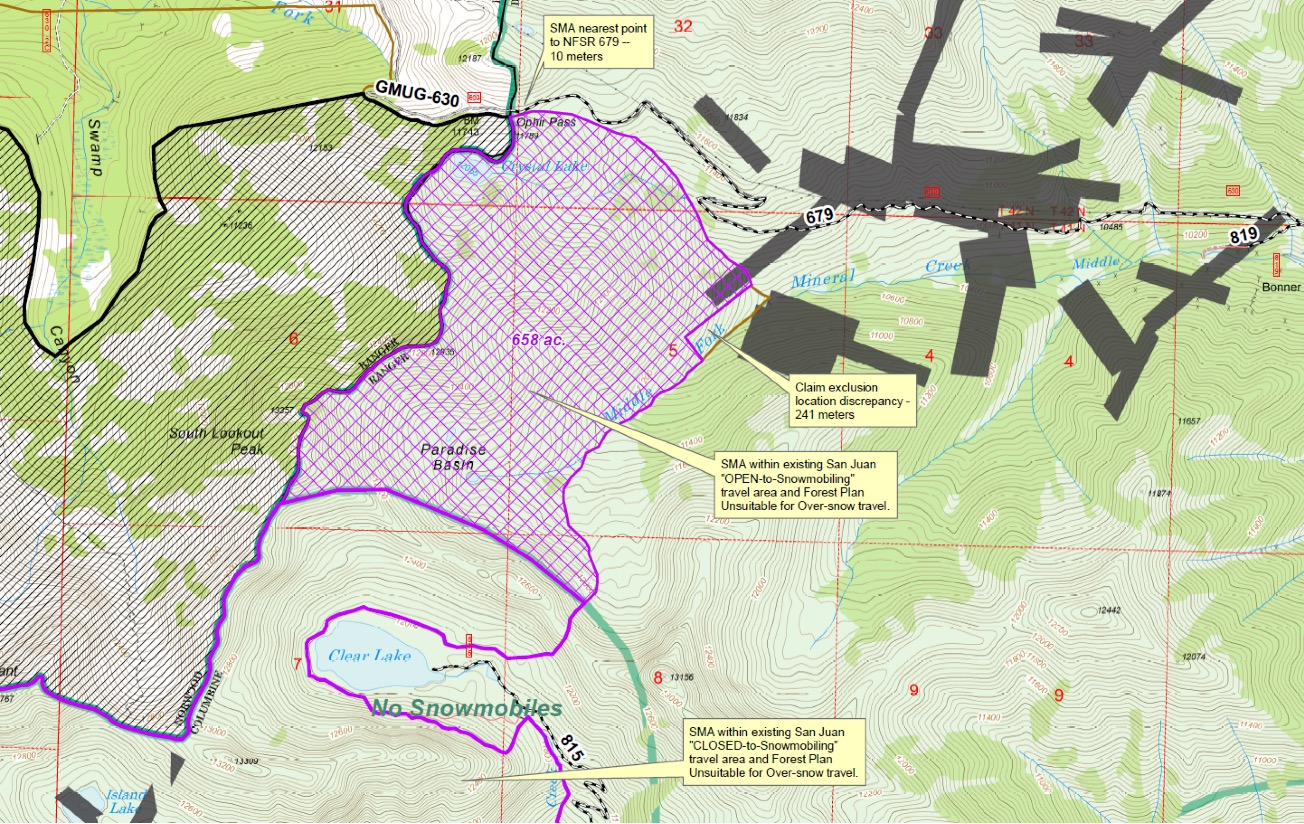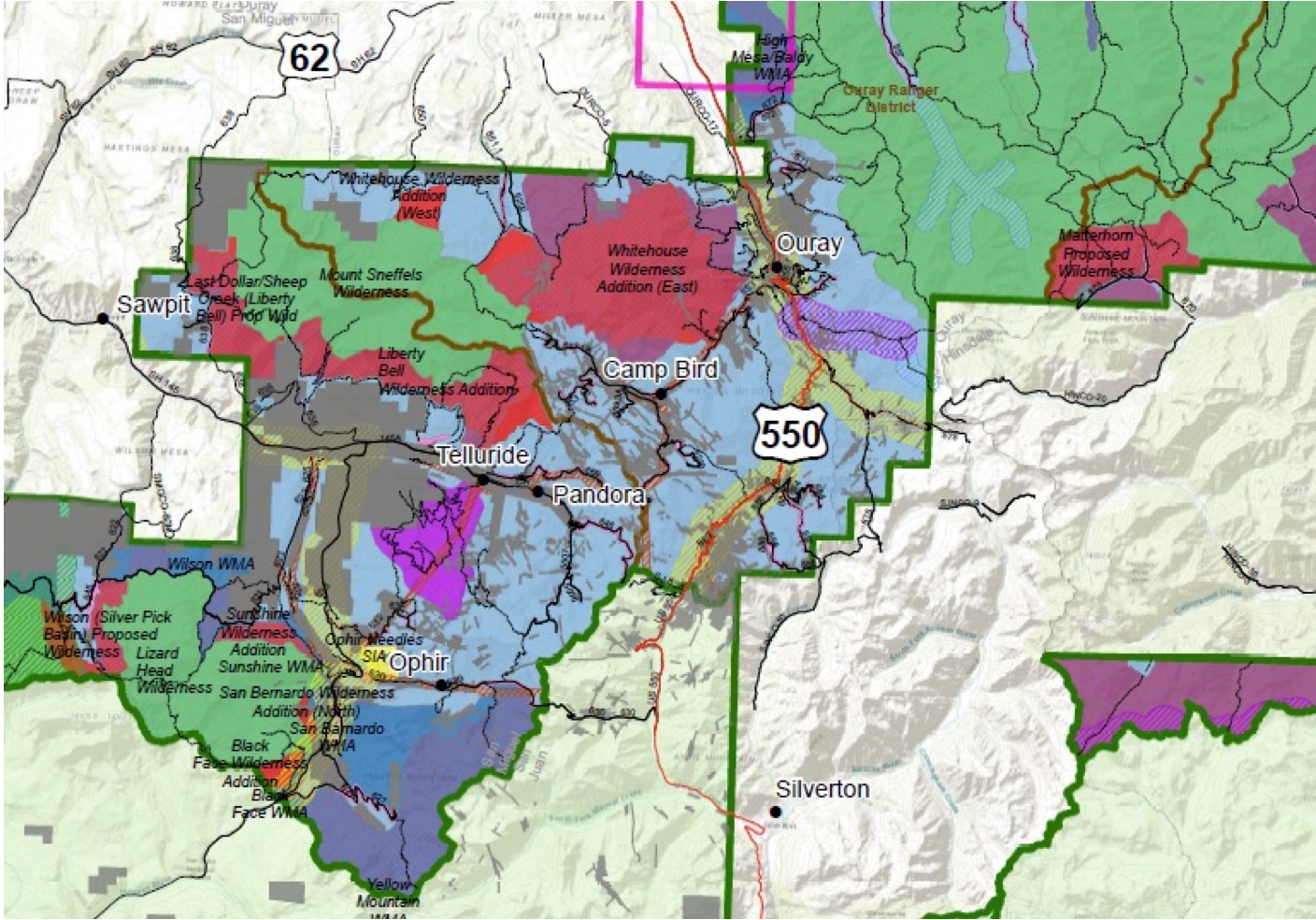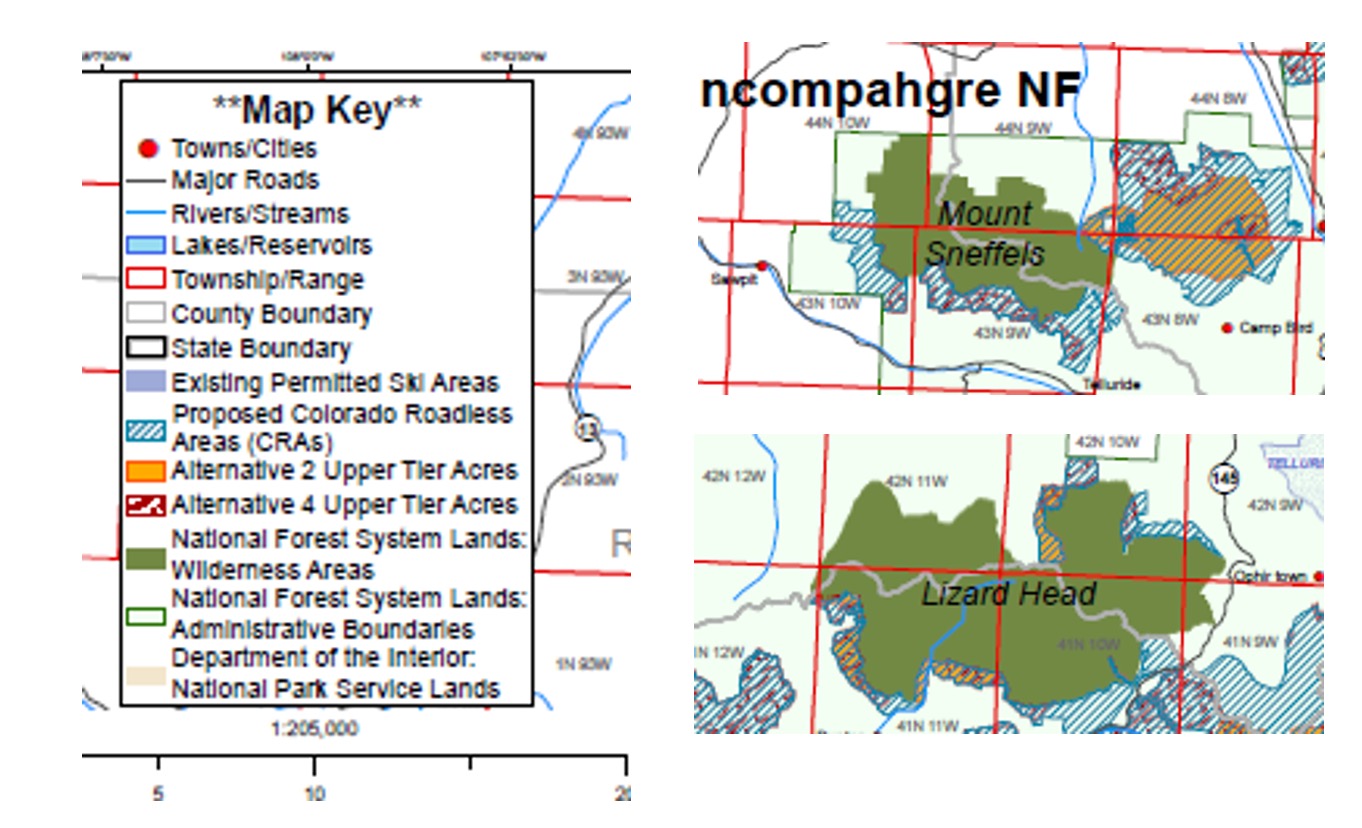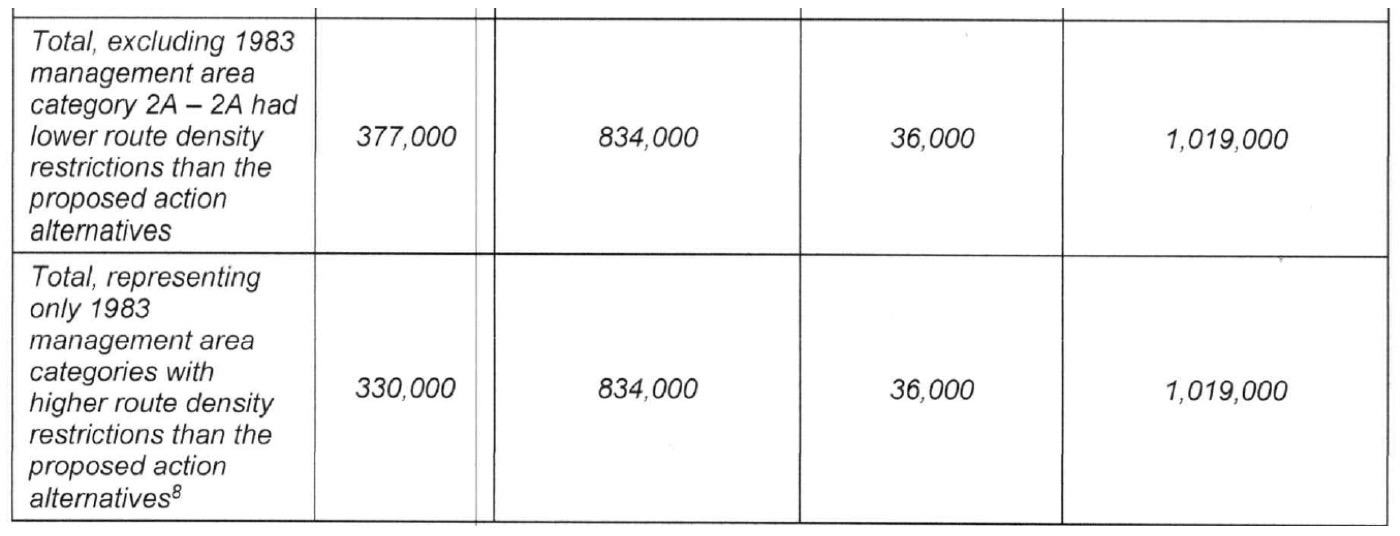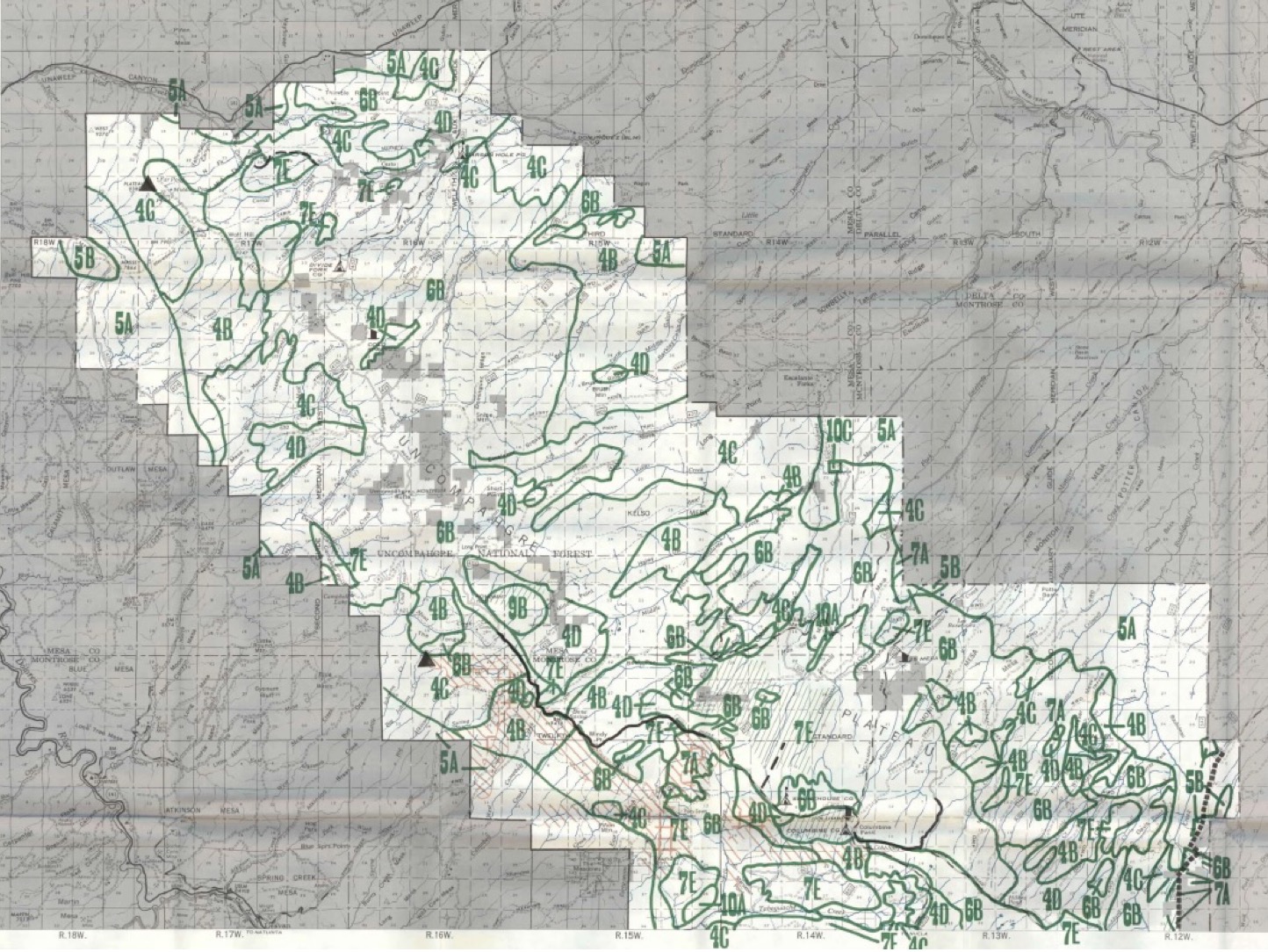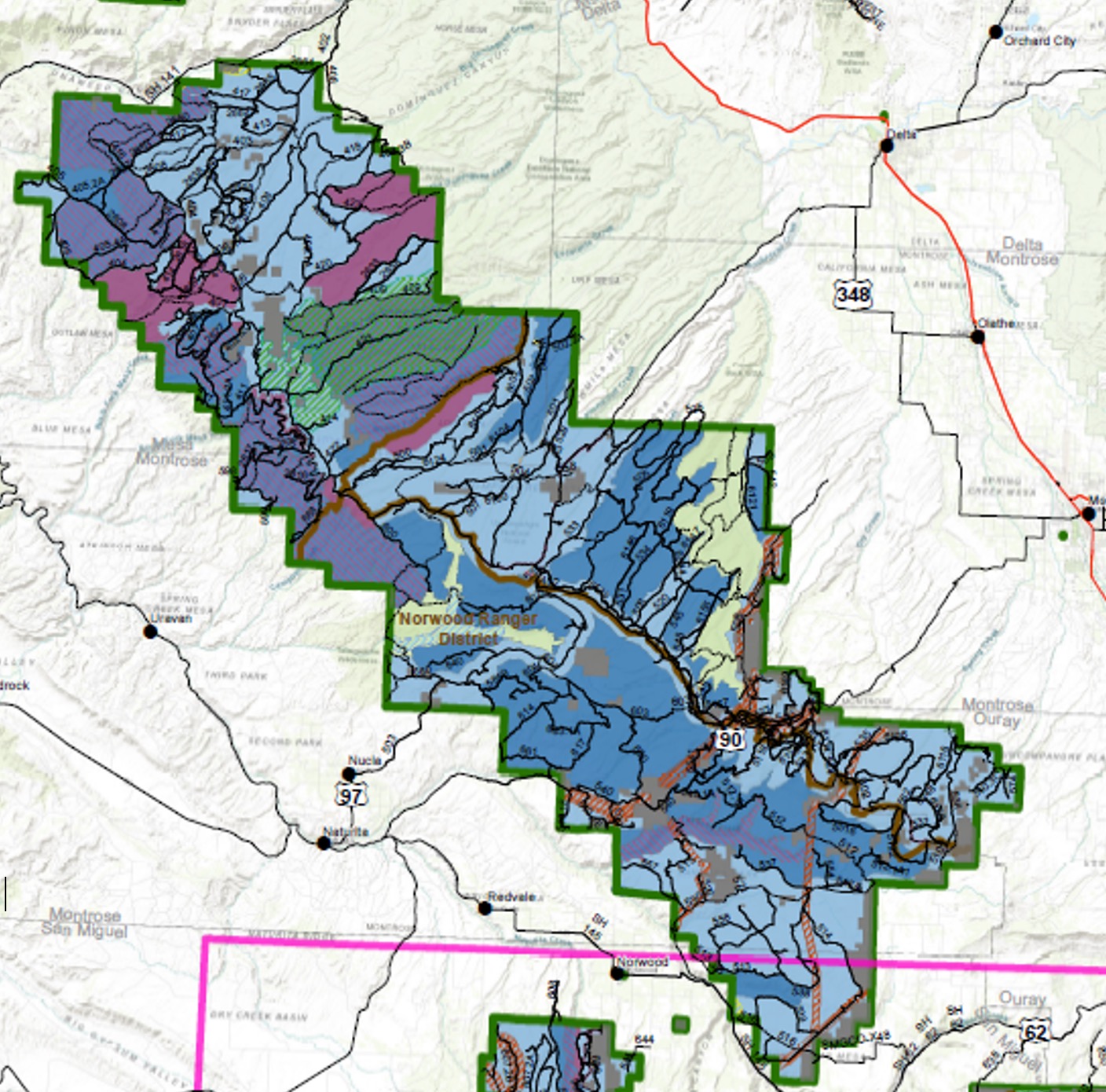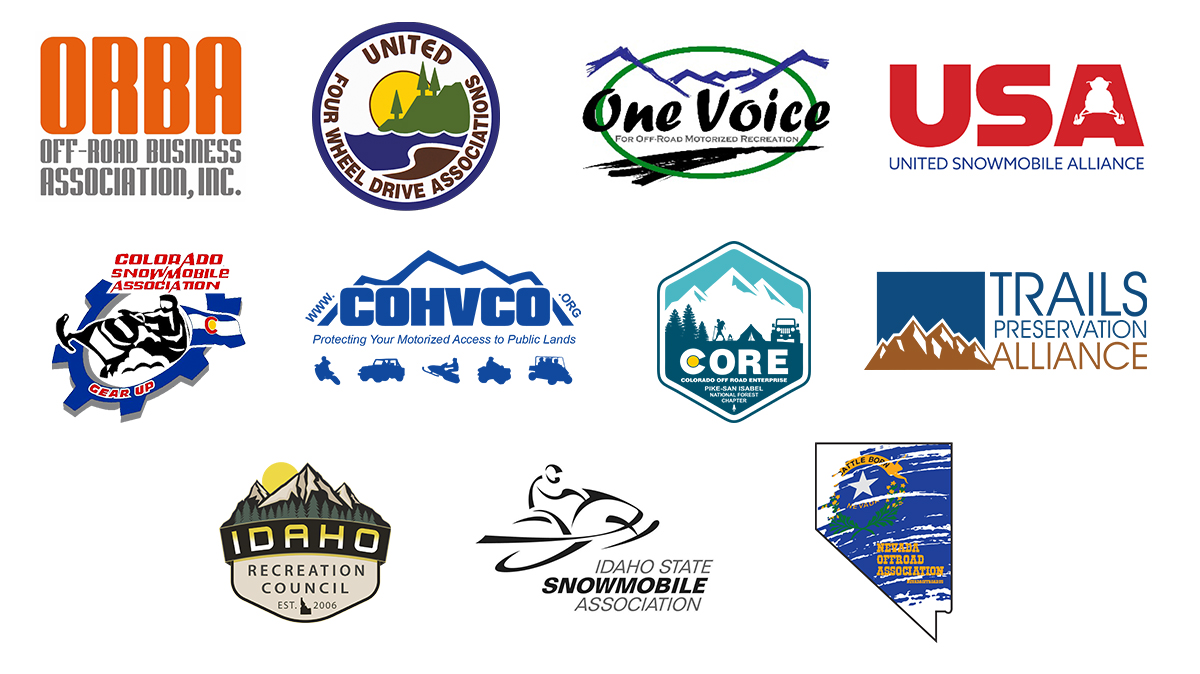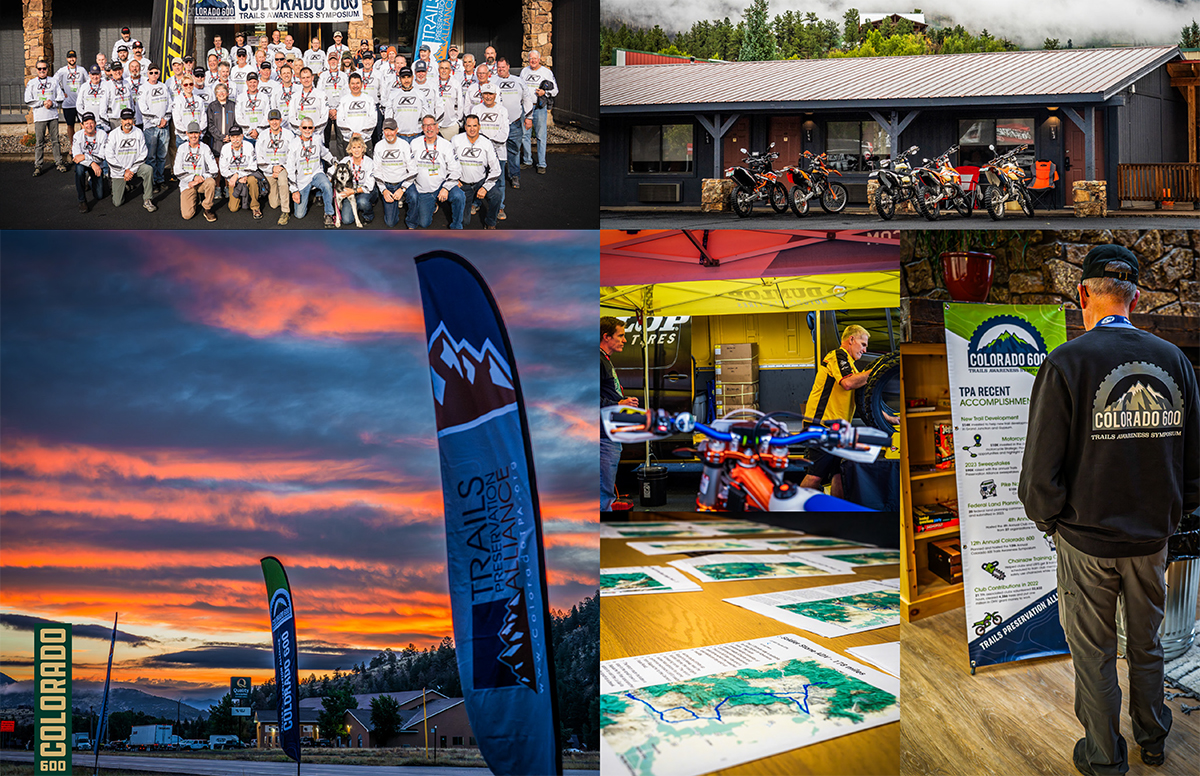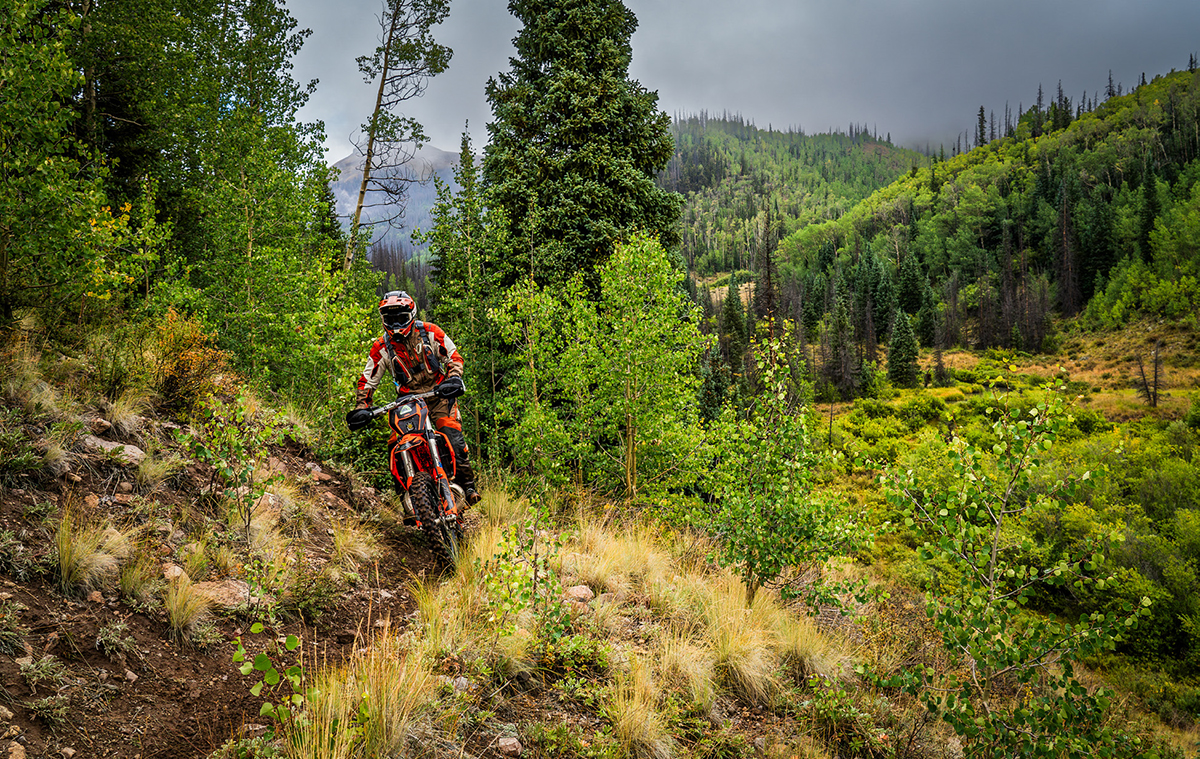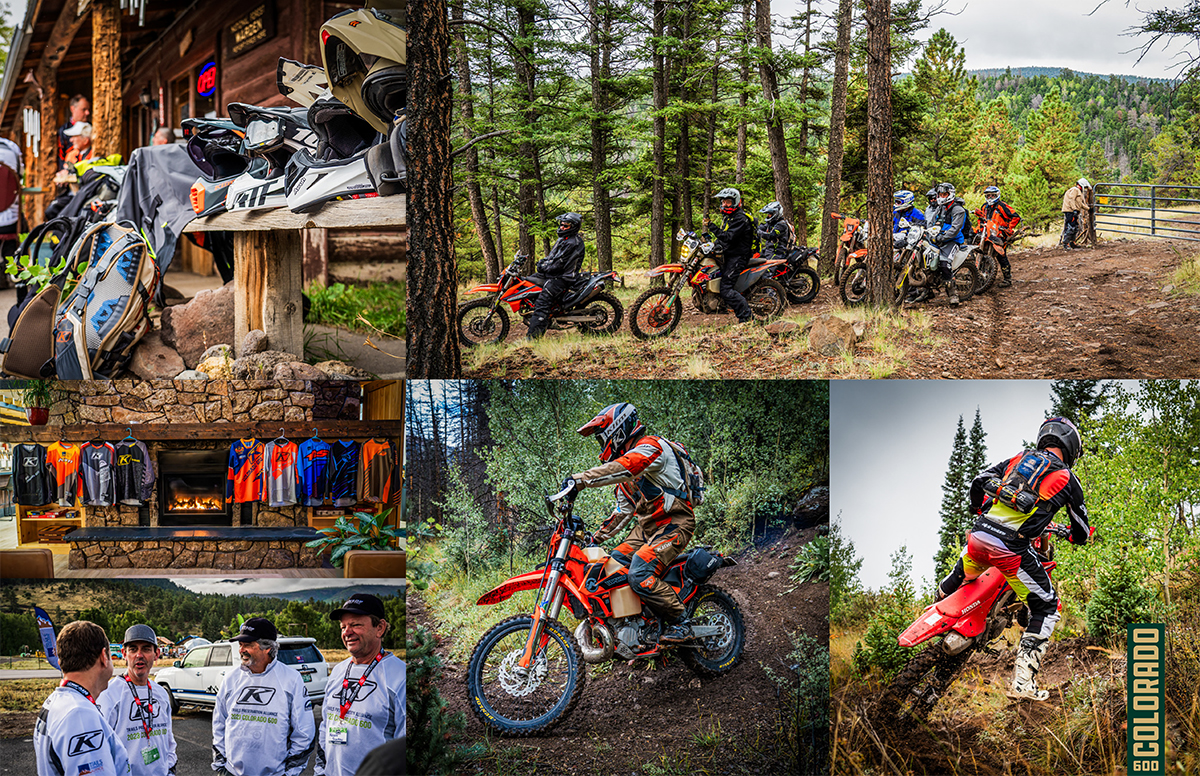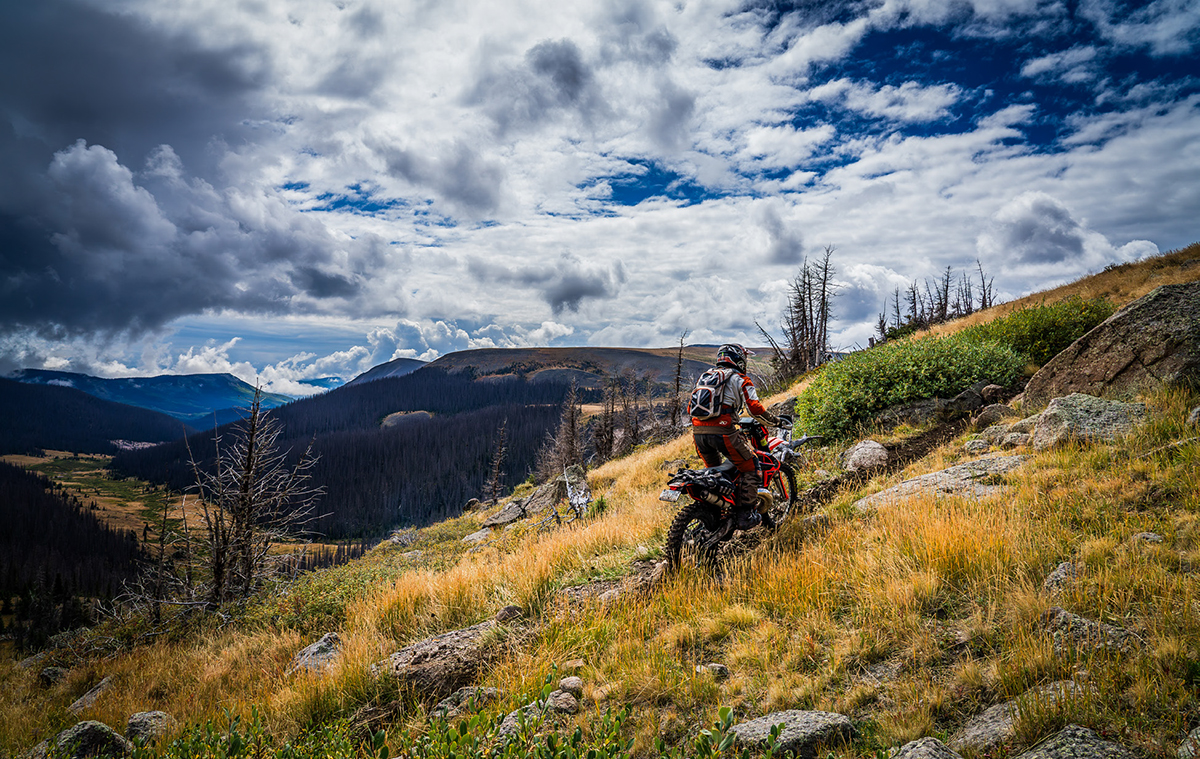Documents:
J. Mark Ward (Utah Bar No. 4436)
3004 W. Sweet Blossom Drive
South Jordan, UT 84095
Telephone: 801-783-7643
mark@balanceresources.org
Attorney for Appellants Colorado Off-Highway Vehicle Coalition, Colorado Off Road Enterprise, Ride with Respect, and Trails Preservation Alliance
UNITED STATES DEPARTMENT OF INTERIOR
OFFICE OF HEARINGS AND APPEALS
INTERIOR BOARD OF LAND APPEALS
| COLORADO OFF-HIGHWAY VEHICLE COALITION, COLORADO OFF ROAD ENTERPRISE, RIDE WITH RESPECT, and TRAILS PRESERVATION ALLIANCE,
Appellants, v. U.S. BUREAU OF LAND MANAGEMENT, Respondent. |
IBLA Appeal No. 2024-
Appeal of the Moab Field Office’s September 28, 2023 Decision Record, Environmental Assessment, and Finding of No Significant Impact for the Labyrinth Rims/Gemini Bridges Travel Management Plan DOI-BLM-UT-Y010-2020-0097-EA (COMPANION APPEAL IBLA 2024-0040) |
NOTICE OF APPEAL
Pursuant to 43 C.F.R. § 4.411, Colorado Off-Highway Vehicle Coalition, Colorado Off Road Enterprise, Ride With Respect, and Trails Preservation Alliance (collectively “Appellants”) hereby provide notice that they appeal the September 28, 2023 Decision Record, Environmental Assessment and Finding of No Significant Impact of the United States Bureau of Land Management (BLM) on the Labyrinth Rims/Gemini Bridges Travel Management Plan, DOI-BLM-UT-Y010-2020-0097-EA, issued and approved on September 28, 2023 by Nicollee Gaddis-Wyatt, BLM Canyon Country District Manager, who has supervisory authority over the Moab Field Office.
Appellants are adversely affected by the BLM’s decision and have the right to appeal pursuant to 43 C.F.R. § 4.410(a).
This Notice of Appeal is timely filed in the office of the officer who made the decision, within 30 days after the BLM issued its Decision Record, pursuant to 43 C.F.R.
§§ 4.411(a)(1) and 4.411(a)(2). The thirtieth day following the September 28, 2023 issuance of the subject Decision Record falls on a Saturday, October 28, 2023. The next business day is Monday, October 30, 2023, the date that this Notice of Appeal is timely filed. 43 C.F.R. § 4.22(e).
This Notice of Appeal is timely served upon the BLM officer who made the decision, Nicollee Gaddis-Wyatt, BLM Canyon Country District Manager, and the U.S. Department of Interior’s Office of the Regional Solicitor, Intermountain Region, pursuant to 43 C.F.R. §§ 4.401(c) and 4.413(a).
Appellants submit herewith a Petition for a Stay of Decision Pending Appeal and supporting Declaration of Clif Koontz, and the Appellants will file a Statement of Reasons with the Interior Board of Land Appeals within 30 days of filing this Notice of Appeal, pursuant to 43 C.F.R. §4.412(a).
Respectfully submitted this 30th day of October 2023.
/s/ J. Mark Ward
Attorney for Appellants Colorado Off-Highway Vehicle Coalition, Colorado Off Road Enterprise, Ride with Respect, and Trails Preservation Alliance
J. Mark Ward (Utah Bar No. 4436)
3004 W. Sweet Blossom Drive
South Jordan, UT 84095
Telephone: 801-783-7643
mark@balanceresources.org
Attorney for Petitioners Colorado Off-Highway Vehicle Coalition, Colorado Off Road Enterprise, Ride with Respect, and Trails Preservation Alliance
UNITED STATES DEPARTMENT OF INTERIOR
OFFICE OF HEARINGS AND APPEALS
INTERIOR BOARD OF LAND APPEALS
| COLORADO OFF-HIGHWAY VEHICLE COALITION, COLORADO OFF ROAD ENTERPRISE, RIDE WITH RESPECT, and TRAILS PRESERVATION ALLIANCE,
Appellants, v. U.S. BUREAU OF LAND MANAGEMENT, Respondent. |
IBLA Appeal No. 2024-
Appeal of the BLM Moab Field Office’s September 28, 2023 Decision Record, Environmental Assessment, and Finding of No Significant Impact for the Labyrinth Rims/Gemini Bridges Travel Management Plan DOI-BLM-UT-Y010-2020-0097-EA (COMPANION APPEAL IBLA 2024-0040) |
PETITION FOR A STAY OF DECISION PENDING APPEAL
Pursuant to 43 C.F.R §§ 4.21(b) and 4.407(a), Colorado Off-Highway Vehicle Coalition (COHVCO), Colorado Off Road Enterprise (CORE), Ride With Respect (RWR), and Trails Preservation Alliance (TPA) (at times collectively “the Petitioners”) respectfully submit this Petition for a Stay of the Bureau of Land Management Moab Field Office (BLM) September 28, 2023 Decision Record, Environmental Assessment, and Finding of No Significant Impact (collectively “Decision Record”) for the Labyrinth Rims/Gemini Bridges Travel Management Plan (“LRGB TMP”). BLM reference DOI-BLM-UT-Y010-2020-0097-EA.
CONCISE STATEMENT OF REASONS SUPPORTING THE PETITION
Petitioners rely on and incorporate herein the reasons stated in the Petition for Stay submitted on or about October 28, 2023 by the State of Utah, et al., (“Companion Appellants”) in the companion appeal, IBLA 2024-0040 (“Companion Appeal”). In addition, Petitioners state the following:
- Far greater harm will result to the Petitioners and their contributors from this unprecedented closure, pending appeal, of 317 miles of popular, long-used and well-established roads and trails, than will result to the BLM from leaving them open pending Petitioners and many of their members and/or contributors are losing the opportunity to use these roads and trails, forever. BLM on the other hand, stands to only wait a little longer to close them, forever. There is no remedy that will correct that wrong, besides staying the decision. 43 C.F.R § 4.21(b)(1)(i).
- The NEPA documents used by the BLM to justify the Decision Record’s unprecedented closure of 317 miles of world-class, longstanding roads and trails in a single travel management area, are so bereft of sound reason and logic, so unsubstantiated by data and experience, and so driven by factors unrelated to good recreation management and resource protection principles, that a substantial likelihood exists this appeal will succeed on the merits. 43 C.F.R § 4.21(b)(1)(ii).
- A closure of this magnitude (317 miles) in such a world-class, high-demand destination as the LRGB Travel Management Area (TMA), will severely concentrate the public’s use of the remaining roads and trails if the stay of decision is not granted, resulting in immediate crowding as well as road and trail degradation that will irreparably harm Petitioners’ investment of countless hours partnering with the BLM to improve, develop and preserve the integrity of all LRGB TMA roads and trails. 43 C.F.R § 4.21(b)(1)(iii).
- The public interest favors granting the stay of decision pending appeal. Moab, Utah’s world-class signature trail system is the LRGB TMA. Users and dozens of user groups, including the Petitioners and their contributors, rank it as unprecedented. Local area ancillary businesses (hotels, restaurants, OHV outfitters and guides, to name a few) all have an immense interest in maintaining the open status quo of the 317 miles of roads and trail slated for closure in the Decision Surely it is not too much to gear down and take time for a careful appellate review of the BLM’s actions, especially when the matter regards roads and trails that are so well established as to garner long-standing world class regard and destination. And to repeat what was stated above, Petitioners and many of their members and/or contributors are losing the opportunity to use these roads and trails forever. 43 C.F.R § 4.21(b)(1)(iii).
STATEMENT OF PETITIONERS’ STANDING
Petitioners rely on and incorporate herein the Standing portion of the Companion Appeal.
In addition, Petitioners state the following:
Petitioners have standing pursuant to 43 CFR § 4.410 as they will be adversely affected by the Decision Record. Petitioners have a legally cognizable interest in the subject matter and the agency’s decision will cause or is substantially likely to cause injury to that interest. See Shell Gulf of Mexico, 187 IBLA 290, 291 (2016).1
BLM’s decision directly affects and is likely to directly affect the ongoing activities of the Petitioners. Board of Pitkin County Comm’rs, 186 IBLA 288, 308 (2015) (“Pitkin”)2 citing Havens Realty Corp. v. Coleman, 455 U.S. 363, 379 (1982). Due to the many route closures, there is a concrete and demonstrable injury to Petitioners activities and mission as well as a consequent drain on the organizations’ resources. Id. citing Valle de Sol, Inc. v. Whiting, 732 F.3d 1006, 1018 (9th Cir. 2013).
Recreational interests are legally cognizable as they include recreational or aesthetic use and enjoyment of the affected public lands. See, e.g. Blue Mountains Biodiversity Project, 188 IBLA 143, 149-50 (2016)).3
Petitioners are well established, long-standing OHV rider organizations with a long and extensive history of OHV use, by those for whom Petitioners advocate, of all of the subject routes in the LRGB TMA. Petitioners COHVCO, CORE, and TPA are Colorado Non-Profit Corporations. Petitioner RWR is a Utah Non-Profit Corporation. All are in good standing.Petitioners collectively have worked with the BLM Moab Field Office and advocated on behalf of OHV stakeholders on LRGB TMA issues for many years, including doing route development, route restoration, route signing and inventorying, and educating the public regarding OHV use best practices in the LRGB TMA. Petitioners have been involved in all of the public NEPA and other processes concerning the LRGB TMA and TMP for the past several years. Petitioners COHVCO, TPA, and RWR were signatories to and/or involved in the 2017 Court Settlement Agreement that is the foundation of the BLM’s ongoing reconsideration of the prior LRGB Travel Management Plan. Petitioners have worked countless hours on improving, developing and preserving the integrity of roads and trails in the LRGB TMA, including the 317 miles of roads and trails slated for closure in the Decision Record. See generally the Declaration of Clif Koontz, including paragraphs 1-5, 37-38, submitted herewith. (hereafter, “Koontz at ”)
Petitioners timely submitted extensive written comments during the designated public comment time period leading up to issuance of the subject Decision Record, but the BLM failed to make changes in response to those written comments.
For these and other obvious reasons, Petitioners and the contributors and motorized riders and groups for whom Petitioners advocate, will be directly, immediately and irreparably injured by the September 28, 2023 Decision Record closing routes in the LRGB TMA. Granting this stay petition and ultimately ruling favorably on this appeal, are necessary to remedy this injury.
STATEMENT OF FACTS
Petitioners rely on and incorporate herein the Statement of Facts portion of the Companion Appeal. In addition, Petitioners state the following:
- Within the LRGB TMA, the BLM closed 766 miles of inventoried routes in 2008, plus another couple-hundred miles of existing routes that were not submitted during the narrow window (11/1/2003 to 12/30/2003) that the BLM was willing to accept route data across the entire Moab Field Office. The 9/28/23 Decision Record now purports to close an additional 317 miles of route to motorized use, many of which are of very high value for motorized trail riding and other forms of recreation. Koontz at 6.
- Many of the subject 317 miles of closed routes are used thousands of times each year, and the ones that are lesser-traveled provide valuable opportunities to avoid For example, the Dead Cow Loop including Dead Cow Canyon and The Tubes is the all-time favorite trail of many motorcycle riders because it follows the flowing slickrock of quite narrow canyon bottoms with views of the Green River, an opportunity that’s incomparable to virtually any other trail. Primitive roads like Tenmile Wash, Hey Joe Canyon, Hell Roaring Canyon, and upper Mineral Canyon weave through wider canyon bottoms of Labyrinth and its tributaries. This opportunity cannot be substituted by the routes in this setting that were left open by the Decision Record, which are only the graded roads of Spring Canyon and lower Mineral Canyon. Koontz at 7.
- Similarly the Decision Record left open the Labyrinth Canyon overlooks that are graded roads as well as a few Easter Jeep Safari (EJS) routes, but it closes most of the overlooks, leaving most stretches of Labyrinth Canyon unviewable from above, let alone viewable from below. Koontz at 8.
- Across the whole LRGB TMA, the Decision Record closes routes that are themselves attractive (such as Mashed Potatoes), that provide connectivity (such as the rim of South Fork Sevenmile Canyon), that reach other points of attraction (such as the roads above Dellenbaugh Butte), and that reach many existing campsites (such as the roads above Dry Fork Bull Canyon). The value of such campsites wasn’t even analyzed prior to closing the routes. Koontz at 9.
- Many recreationists (including contributors to COHVCO, CORE, RWR, and TPA) prefer the unique qualities of motorized trail riding over non-motorized recreation, while others require motorized travel due to physical limitations. Depending on its form, motorized trail riding can provide physical exercise, a mental challenge of one’s focus and skills, and a sense of flow or harmony with nature. It also provides access to remote settings that some people depend upon for their sense of well being and wholeness. The Decision Record irreparably harms these important virtues for many contributors to COHVCO, CORE, RWR, and TPA, because of the many routes that the Decision Record closes, which are so very important for their physical and mental health. Koontz at 10.
- Keeping these routes open is also very important for the business health and sustainability of many local commercial establishments, (many of whom are contributors to COHVCO, CORE, RWR, and TPA), which is far more important than any marginal benefits to be gained from the routes’ In Moab and Green River, many outfitters and events utilize some of the subject 317 miles of routes, which provide opportunities that cannot be substituted by other routes for their customers. Koontz at 11.
- In addition to being unique and of high quality, many of the 317 miles of routes contribute significantly to the trail system’s carrying capacity. That system carrying capacity is a unique and hard won, and hard to preserve resource value in which COHVCO, CORE, RWR, TPA and their contributors have a vital interest and stake, due to the countless hours Petitioners have spent maintaining, repairing, and improving that carrying All of that stands to be harmed quickly and irreparably from the Decision Record’s closure of the 317 miles of routes. Koontz at 12. None of that investment of time and hard work was analyzed, much less analyzed in the NEPA documents supporting the Decision Record.
- The resource values of roads and trails with uncompromised carrying capacity, in which so many contributors to COHVCO, CORE, RWR, and TPA place such a high value, stand to be directly and irreparably harmed by the Decision Record’s 317 miles of closures, thus forever impacting the recreational lifestyle through overcrowding and deterioration of the remaining routes. Koontz at 13.
- Closing the 317 miles of routes makes it significantly harder for a variety of motorized recreationists, including the many contributors to COHVCO, CORE, RWR, and TPA to have an enjoyable experience. Closing the 317 miles of routes will not allow the BLM to meet current demand for recreation, let alone future demand. Koontz at 14.
- Also in direct and irreparable harm to the values of the many contributors of COHVCO, CORE, RWR, and TPA, the Decision Record’s looming closure of the 317 miles of routes is quite likely to drastically reduce compliance with the TMP, as frustrated recreationists travel on closed routes, blaze unauthorized routes, and travel on no route by simply going cross country. Such activity will lead to more negative impacts to soil, vegetation, and wildlife as the wildlife won’t be able to predict or habituate to patterns of human travel. Koontz at 15.
- The core values of COHVCO, CORE, RWR, and TPA will be irreparably harmed further, in that closing the 317 miles of routes is also quite likely to increase user conflict as more motorized recreationists travel off of designated routes and/or develop animosity toward the types of recreation for which the routes were ostensibly closed. Such animosity could also extend to the natural and cultural resources for which the routes were ostensibly closed. This is just bad land management policy, and it is too bad the BLM did not take seriously the input of COHVCO, CORE, RWR, and TPA in this regard. Koontz at 16.
- Of the subject 317 miles of routes, closing most of them to motorized use won’t significantly benefit non-motorized recreation, such as closing overlooks of Labyrinth Canyon that are 1,000 ft above the Green River, as non-motorized river runners barely see or hear people at those overlooks (much less be bothered by them). Some of the closures would actually harm non-motorized recreation because they’re used for bicycling or for driving to a parking spot in order to start a hike. Any isolated benefits to non-motorized recreation of closing the whole 317 miles of routes are dwarfed by the harm to motorized recreation of drastically reducing the quantity, quality, and connectivity of this trail system. Koontz at 17.
- Likewise of the subject 317 miles of routes, closing most of them to motorized use won’t significantly benefit wildlife. The boiler-plate rationale for closing many of these routes is to minimize habitat fragmentation, but these primitive singletracks and doubletracks appear unlikely to fragment habitat, even They’re far less obtrusive than modern highways, and they don’t even break up a canopy of trees as may be the case with forest roads. Many wildlife tracks can be seen across these primitive routes, and vehicle collisions with wildlife are virtually unheard of. Koontz at 18.
- All of these negative consequences to Petitioners and their contributors, to the natural resources, and cultural resources are likely to be immediate and long Simply put, closing the 317 miles of routes will make recreation far more difficult to manage, so it should not be rushed. Koontz at 19.
- In contrast, delaying closure of the 317 miles of routes until the appeal is resolved would do no significant or long-lasting harm to contrary Koontz at 20.
- Blatant, serious resource and land management problems abound in the Decision Record. The analysis of negative impacts from closing the 317 miles of routes is grossly inadequate. The Decision Record’s estimation that motorized recreation comprises only 6% of the recreational use in the LRGB TMA has no basis in The Decision Record cites Manti-La Sal National Forest, but the draft Land Management Plan of that forest actually states “Motorized trail activity in general is reported as a main activity for approximately 20 percent of all visitors to the Forest in 2016 (U.S. Department of Agriculture, Forest Service, 2017) and 32 percent in 2021 (U.S. Department of Agriculture, Forest Service, 2023).” Compared to national forests, the portion of visitation to the LRGB planning area that’s motorized trail riding is probably larger. The Decision Record also cites a 2007 study of recreation in the Moab Field Office that was designed to test the accuracy of National Visitor Use Monitoring (NVUM) methodology of the USFS when applied to BLM lands. The results demonstrate that NVUM methodology is inaccurate especially when applied to activities such as motorized trail riding that are highly dispersed (which makes riders harder for surveyors to reach) and of a faster pace (that makes riders far less likely to voluntarily participate). These sampling biases could easily have led to motorized trail riders being underrepresented by a factor of six and, since 2007, motorized trail riding has grown faster than most other forms of outdoor recreation in the LRGB TMA. Koontz at 21.
- The Decision Record provides rationale for closing each route, but many of the reasons listed are completely inaccurate and unapplicable while others are generic statements such as closure “minimizes impacts to soil” without demonstrating that substantially adverse impacts have occurred or even have significant potential to occur to these routes with which Petitioners have personal knowledge. Koontz at 22.
- The following constitute a small sample of such inaccuracies from just one part of the LRGB TMA, which is Tenmile Point: All of Tenmile Point is in the Labyrinth Rims / Gemini Bridges SRMA, which includes the management goal of providing opportunities for “quality on-route mountain biking and backcountry driving experiences on established routes throughout the SRMA” and “Maintain the scenic character of Labyrinth SRMA to allow visitors to enjoy an unconfined ” Closing the 317 miles of routes certainly confines the opportunities of motorized recreationists. Koontz at 23.
- All routes north of the Trin-Alcove Bend and Tenmile Point graded roads (B377 and B336) are also in the Dee Pass Motorized Trail Focus Area, which is the only motorized trail focus area in the Moab Field Office. The 2008 RMP states “the Dee Pass Motorized Trail Focus Area is established for motorcycle and ATV use. All competitive motorized events would be directed to this area. By emphasizing and managing for specific recreation activities in these Focus Areas, recreation conflicts are Focus Areas set visitor expectations for a specific type of recreation experience, thereby reducing potential conflict. Those who choose to hike in a motorized Focus Area should not be surprised by the amount of motorized activity. Focus Areas in the Approved RMP provide opportunities for the widest range of recreational activities and attendant business opportunities.” It further states “Dee Pass Motorized Trail Focus Area (35,290 acres) for motorcycle and ATV use: This is the area for competitive motorized events…Establish a managed OHV route system with provision for ongoing management of existing single-track routes to maintain their singletrack character.” Clearly the 2008 RMP emphasizes motorized trails in this focus area yet, when it comes to Tenmile Point, the 2023 Decision Record does the opposite. The highlighted routes that fall within this focus area are listed at paragraphs 20 through 25 as well as 29 below. This focus area also abuts paragraphs 27 and 28 below. The routes are generally listed in a counterclockwise fashion. Koontz at 24.
- Tri Tip ATV Loop (TTIP1): The Decision Record prohibits the use of ATVs (under fifty inches in width) on this trail even though all four alternatives in the 2022 draft Environmental Assessment allow such use. Therefore this prohibition falls outside of the decision space, which is why Petitioners didn’t comment on such a prohibition. Petitioners assisted the BLM in planning and implementing the construction of this route from 2013 to 2017, and have assisted in maintaining it since then. An agent for Petitioners utilized $6,750 awarded by the Polaris ‘T.R.A.I.L.S.’ Grant Program, which is specifically for projects open to use by ATVs or The route is almost entirely on slickrock and old constructed roads that are entirely suitable for ATV use. Even though most use of the route is by motorcycle, it should remain open to ATV use, as some ATV riders seek trails that are narrower than 4WD routes. Koontz at 25.
- Dead Cow Loop Bisect Road (D2761B): This primitive road provides views of the Green River as well as providing a bailout for riders of Dead Cow Loop. The Decision Record closes this road to all motorized use even though the route is left open in all four alternatives in the 2022 draft Environmental Assessment. Therefore this closure falls outside of the decision space, which is why Petitioners did not comment on such a closure. Rationale for this closure include reducing “fragmentation in desert bighorn sheep lambing habitat and in pronghorn fawning habitat.” However, according to maps from the 2016 Moab Master Leasing Plan, this road isn’t in bighorn sheep lambing habitat nor pronghorn fawning habitat. Rationale for this closure also includes “minimizing potential for soil erosion” despite that no significant erosion has occurred, nor is there significant potential given the shallow bedrock along most of the route and low grade along all of the route. In short, the route has significant recreational value, and it poses no significant negative impacts. Koontz at 26.
- East end of Dead Cow Loop Bisect Road (DC2 northeast of D2761B): The Decision Record limits this 0.06-mile route to motorcycle use, but on the ground it is actually the east end of the Dead Cow Loop Bisect Granted, historically the alignment may have followed D2761B (south of DC2), but the Dead Cow Loop Bisect Road has followed DC2 for the past couple of decades. In fact in 2014 the BLM closed D2761B (south of DC2) and opened DC2 northeast of D2761B to full-size vehicle use (see Map 2 of Minor Travel Plan Adjustment 7, DOI-BLM-UT-Y010-2013-0248-EA). Accordingly in 2015 D2761B (south of DC2) and marked DC2 northeast of D2761B were noted as open to use by full-size vehicles. Therefore the 2022 draft Environmental Assessment should have indicated via the no-action alternative that DC2 northeast of D2761B is currently open to full-size vehicle use. It also should have indicated via the no-action alternative that D2761B (south of DC2) is currently closed to motorized use. Petitioners brought these points to the attention of Moab Field Office recreation planners in 2021, but it was not corrected in the 2022 draft Environmental Assessment. Petitioners reminded them of the persistent problem in 2022, but it was not corrected in the 2023 Decision Record either. Koontz at 27.
- Southeast end of Dead Cow Loop (DC2 southwest of D2761B): This 82-mile route is the southeast end of Dead Cow Loop, but it can also be used to ride Dead Cow Cutoff in lieu of the full Dead Cow Loop. Petitioners assisted the BLM in planning and implementing the construction of this route from 2015 to 2017, and have assisted in maintaining it since then. It was essentially a reroute of the west end of Five Mile Of Whoops, which Petitioners assisted the BLM in closing because the whoops caused trail widening. In contrast, the rerouted southeast end of Dead Cow Loop is almost entirely on slickrock, and the few sections on soil have been designed with flowing turns that drain rainwater and entice riders to stay on the trail while also encouraging slower, consistent speed to minimize the development of whoops. In other words, this route is a model of good trail design, and it is working well. Whether for accessing Dead Cow Loop or Dead Cow Cutoff, the trail is pleasing to ride and it poses no significant negative impacts. The Decision Record rationale is that closing this route will “contribute to retaining and restoring soil and vegetation cover, minimizing potential for soil erosion. Closing this route will minimize impacts to wildlife (e.g., desert bighorn sheep, pronghorn crucial fawning range) and enhance wildlife movement by reducing habitat fragmentation. Closing this route will minimize the potential for harassment of wildlife.” Actually closing the route would not significantly contribute to restoring soil and vegetation cover or minimizing potential for soil erosion because the route is on slickrock. Further, the route isn’t in pronghorn crucial fawning habitat according to maps in the 2016 Moab Master Leasing Plan. Closing it is unlikely to reduce habitat fragmentation because the route is just a singletrack on slickrock that lacks constant use like one may find on a modern highway. Closing the route is unlikely to minimize the harassment of wildlife because the type of people who harass wildlife are the type of people who ride wherever they want in the open desert. The Decision Record makes several claims in its rationale, but none of them match the reality on the ground, and there is no legitimate reason to close this text-book example of a quality trail. Koontz at 28.
- South half of Dead Cow Cutoff (the part of DC3A that’s between DC3 and DC2): The Decision Record closes the south half of Dead Cow Cutoff, claiming significant impacts to riparian habitat and wildlife, none of which is accurate because the south half of Dead Cow Cutoff does not traverse riparian habitat whatsoever. It does traverse a hill with steep grades on either side, but the route has exposed the underlying bedrock, so widening or deepening of the trail bed is unlikely. Even if the current alignment were to become unsustainable, the BLM could work with motorized recreation groups to realign it and reduce the grade. The south half of Dead Cow Cutoff provides a moderate challenge for riders, and rewards them with hilltop views to the Green River and beyond. In short, the trail is of significant value, and it poses no significant harm. Koontz at 29.
- Dead Cow Loop (DC3A except for the part that’s between DC3 and DC2): Dead Cow Loop is arguably the premier motorized singletrack in southeast Utah. Many motorcyclists visit Green River or Moab specifically to ride Dead Cow because of the narrow flowing canyons and views near the Green River, which cannot be substituted by any other routes. The slickrock base minimizes the potential for erosion or other negative impacts to soil. While Dead Cow Wash and the Tubes are riparian tributaries of the Green River, so are about a dozen other tributaries in the LRGB TMA, not to mention another dozen on the west side of Labyrinth Canyon. The 2008 TMP already closed the Low Water route to reduce exposure near the river, and agents for Petitioners spent many days particularly from 2012 to 2014 blocking off the Low Water route to all motorized use and blocking off The Tubes to use by wider vehicles. The comments Petitioners submitted last year explained more mitigation that could be accomplished quite feasibly, such as rerouting the section that’s near the river to be further east so it’s behind a long gravel deposit from the perspective of non-motorized river runners. This project could actually reroute Dead Cow Loop to avoid the lowest end of The Tubes drainage as well. Likewise the High Water section that’s up on the flats could be rerouted further east to utilize slickrock, which would avoid the development of moguls or subsequent trail And likewise this project could actually reroute Dead Cow Loop to avoid the lower end of Dead Cow Wash as well. Closing the current routes would be exponentially easier to accomplish after the new routes are in place. These additional management actions would be worthwhile since Dead Cow Loop is a “bucket list” trail for many motorcyclists worldwide. Koontz at 30.
- Road south of F Canyon (D2845): This spur reaches a slickrock expanse with unique overlooks of Labyrinth Canyon. Any off-trail travel could be stopped by more clearly defining the route’s end, and preferably designating an end point with a good view for the many recreationists who are unable to walk far beyond their parking spot. The Decision Record’s rationale claims that closing the route would minimize impacts to pronghorn fawning, but the route isn’t in pronghorn crucial fawning habitat according to maps in the 2016 Moab Master Leasing Plan. The Decision Record also claims that “Closing D2845 and adjacent overlooks minimizes potential for conflicts between motorized and non-motorized users.” The “adjacent overlooks” are already not designated open by the 2008 TMP, so blocking them off wouldn’t require closing D2845, as D2845 doesn’t get within a half-mile of the river. Further, even the “adjacent overlooks” are a quarter-mile away from the river, and they’re several-hundred feet above the river. Motorized use of D2845 or even use of the adjacent overlooks is simply not likely to significantly conflict with non-motorized use of the river. Koontz at 31.
- South Tenmile Point Road (D2840): The Decision Record makes several false claims in its rationale to close this It claims that closure would reduce impacts to crucial fawning range, but the route isn’t in pronghorn crucial fawning habitat according to maps in the 2016 Moab Master Leasing Plan. It claims that closure would help “minimizing impacts to soil cover” despite that no significant impacts to soil have occurred, nor is there significant potential given the low grade of this road. It claims closure would result “in a less redundant route network” despite that the Tenmile Point graded road which is a half-mile to the north is no substitute for this primitive road. With BLM’s coordination, in 2017 agents for Petitioners marked this road as “Tenmile Point”, a featured 4WD route to organize the use patterns of vehicles over fifty-inches wide that would not be permitted to use Tri Tip ATV Trail. This road may not be famous for 4WD recreation, but it provides a much more trail-like opportunity than the graded road, and it is key to keeping people off of the many other primitive roads across Tenmile Point that have been closed over the past fifteen years. Koontz at 32.
- East end of Five Miles of Whoops (DC1): Even though this ATV trail used to be the east end of Five Miles of Whoops, it’s entirely on slickrock that has a smooth, hummocky surface which is ideal for ATV and motorcycle In 2012 agents for some of the Petitioners worked with the BLM to reroute this trail to minimize cultural impacts. They also marked the route with many signs so the slickrock wouldn’t require annual painting, and agents for petitioners installed fifty-inch width limiters at each end. The Decision Record states “DC1 is closed to motorized travel. DC1 is 0.54 miles long and provides access to Ten Mile Wash, which is closed to motorized travel. Closing DC1 reduces confusion and minimizes impacts to soil, water, vegetation and desert bighorn sheep and pronghorn fawning habitat.” Actually this ATV trail is nearly a mile away from the access point to Tenmile Canyon, so the route is valuable and appropriate regardless of the status of Tenmile Canyon. Although this ATV trail is less than a mile long, it is an absolute highlight for riders because it adds slickrock undulations to the relatively flat and sandy roads nearby. In short, the trail is of significant value, and it poses no significant harm. Koontz at 33.
- Shortcut between Tenmile Point and Red Wash graded roads (D2863): This primitive road offers nice sweeping turns as it climbs a gentle grade, but mostly it offers efficiency for recreationists connecting Tenmile Point with Red Wash or other destinations to the north. Otherwise one must travel a mile further east only to double back on another graded road. Closing this primitive road will tempt people to go off-trail across the quarter mile or less of flat, open desert that separates the two graded roads. If the road were posing significant harm, perhaps closure would be justified, but the Decision Record’s rationale doesn’t hold up. It claims that the road is in pronghorn crucial fawning range, but the route isn’t in pronghorn crucial fawning habitat according to maps in the 2016 Moab Master Leasing Plan. The Decision Record also claims that closure would help “minimizing the potential for soil erosion” despite that the road is quite unlikely to cause significant soil erosion due to its gradual turns and gradual grade. In short, the road is serving a transportation purpose, and closing it would probably cause more negative impacts overall. Koontz at 34.
- Tenmile Wash – Tenmile Point Cutoff Road (Object ID 42353 / Route Plan ID 36): By omission, the Decision Record closes a Class D primitive road that shortcuts the graded roads of Dripping Spring and Tenmile Point. For reference, the primitive road lies at the northwest end of Pinnacle Trail (PINTT1). For ATV and 4WD recreationists who can’t use the singletrack of Pinnacle Trail, this primitive road is both more enjoyable and more direct than staying on the graded roads to connect Dripping Spring with Tenmile Point. The 2008 TMP designated this road as an ATV trail limited to vehicles less than fifty-inches in width, but fortunately the BLM later reopened it to full-size vehicles as shown on its TMP Map 19 dated 1/9/2017. Despite being a route currently designated open for full-size vehicles, the route was missing from the preliminary no-action alternative in 2021. Petitioners brought this route to the attention of Moab Field Office recreation planners in 2021, but it was not corrected in the 2022 draft Environmental Assessment. Petitioners reminded them of it in 2022, but it was not corrected in the 2023 Decision Record either. This primitive road is useful, and poses no significant harm. Even if there were a compelling reason to close it, the road should’ve been shown in the no-action alternative of the 2022 draft Environmental Assessment, followed by a rationale for closing it and an invitation for public comment. Koontz at 35.
- The route closures highlighted above from just one small portion of the LRGB TMA provide a glimpse into the many unfounded claims that the Decision Record made to justify closing the subject 317 miles of routes. Koontz at 36.
- Petitioners have invested thousands of hours in working to help the BLM implement and refine its TMP in the LRGB TMA for the benefit of recreation, natural resources, and cultural resources alike. Unfortunately the Decision Record abruptly undermines the progress of this partnership by taking drastic actions that are not grounded in facts, conditions on the ground, nor the feasibility of gaining compliance, doing immediate irreparable damage to the important value of diverse recreation in the LRGB TMA, which is so essential to stakeholders COHVCO, CORE, RWR, TPA and their Koontz at 37.
ARGUMENT
Petitioners rely on and incorporate herein the Argument portion of the Companion Appeal. In addition, Petitioners state the following:
The foregoing detailed statement of facts demonstrate that granting a stay of the LRGB TMP Decision Record pending appeal, is justified for the four concise reasons stated above. The statement of facts show that, again:
- Far greater harm will result to the Petitioners and their contributors from this unprecedented closure, pending appeal, of 317 miles of popular, long-used and well-established roads and trails, than will result to the BLM from leaving them open pending Petitioners and many of their members and/or contributors are losing the opportunity to use these roads and trails, forever. BLM on the other hand, stands to only wait a little longer to close them, forever. There is no remedy that will correct that wrong, besides staying the decision. 43 C.F.R § 4.21(b)(1)(i).
- The NEPA documents used by the BLM to justify the Decision Record’s unprecedented closure of 317 miles of world-class, longstanding roads and trails in a single travel management area, are so bereft of sound reason and logic, so unsubstantiated by data and experience, and so driven by factors unrelated to good recreation management and resource protection principles, that a substantial likelihood exists this appeal will succeed on the merits. 43 C.F.R § 4.21(b)(1)(ii).
- A closure of this magnitude (317 miles) in such a world-class, high-demand destination as the LRGB TMA, will severely concentrate the public’s use of the remaining roads and trails if the stay of decision is not granted, resulting in immediate crowding as well as road and trail degradation that will irreparably harm Petitioners’ investment of countless hours partnering with the BLM to improve, develop and preserve the integrity of all LRGB TMA roads and trails. 43 C.F.R § 4.21(b)(1)(iii).
- The public interest favors granting the stay of decision pending appeal. Moab, Utah’s world-class signature trail system is the LRGB TMA. Users and dozens of user groups, including the Petitioners and their contributors, rank it as unprecedented. Local area ancillary businesses (hotels, restaurants, OHV outfitters and guides, to name a few) all have an immense interest in maintaining the open status quo of the 317 miles of roads and trail slated for closure in the Decision Surely it is not too much to gear down and take time for a careful appellate review of the BLM’s actions, especially when the matter regards roads and trails that are so well established as to garner long-standing world class regard and destination. And to repeat what was stated above, Petitioners and many of their members and/or contributors are losing the opportunity to use these roads and trails forever. 43 C.F.R § 4.21(b)(1)(iii).
CONCLUSION
Based on all of the foregoing, a stay pending appeal of the BLM’s September 28, 2023 Decision Record for the LRGB TMP, should be granted both in this and the Companion Appeal.
Respectfully submitted this 30th day of October 2023.
/s/ J. Mark Ward
Attorney for Petitioners Colorado Off-Highway Vehicle Coalition, Colorado Off Road Enterprise, Ride with Respect, and Trails Preservation Alliance
1 Shell Gulf of Mexico, 187 IBLA 290 (2016).
https://www.oha.doi.gov/IBLA/Ibladecisions/187IBLA/187IBLA290.pdf.
2 Board of Pitkin County Comm’rs, 186 IBLA 288 (2015), https://www.oha.doi.gov/IBLA/Ibladecisions/186IBLA/186IBLA288.pdf.
3 Blue Mountains Biodiversity Project, 188 IBLA 143 (2016), https://www.oha.doi.gov/IBLA/Ibladecisions/188IBLA/188IBLA143.pdf.
J. Mark Ward (Utah Bar No. 4436)
BALANCE RESOURCES
3004 Sweet Blossom Drive
South Jordan, UT 84095
Telephone: 801-783-7643
mark@balanceresources.org
Attorney for Appellants Colorado Off-Highway Vehicle Coalition, Colorado Off Road Enterprise, Ride with Respect, and Trails Preservation Alliance
UNITED STATES DEPARTMENT OF INTERIOR
OFFICE OF HEARINGS AND APPEALS
INTERIOR BOARD OF LAND APPEALS
| COLORADO OFF-HIGHWAY VEHICLE COALITION, COLORADO OFF ROAD ENTERPRISE, RIDE WITH RESPECT, and TRAILS PRESERVATION ALLIANCE,
Appellants, v. UNITED STATES BUREAU OF LAND MANAGEMENT, Respondent. |
IBLA Appeal No. 2024
Appeal of the Moab Field Office’s September 28, 2023 Decision Record, Environmental Assessment, and Finding of No Significant Impact for the Labyrinth Rims/Gemini Bridges Travel Management Plan DOI-BLM-UT-Y010-2020-0097-EA (COMPANION APPEAL IBLA 2024-0040) |
DECLARATION OF CLIF KOONTZ
I, Clif Koontz, make the following declaration. I understand that this declaration will be filed with the Interior Board of Land Appeals, Office of Hearings and Appeals in the above captioned case, and I understand that this declaration is the legal equivalent of a statement under oath.
- I live in Moab, I am the Executive Director of Ride with Respect (RWR), a Utah nonprofit corporation in good standing and a defendant intervenor in this matter. I am also an agent of Colorado Off-Highway Vehicle Coalition (COHVCO), Colorado Off Road Enterprise (CORE), and Trails Preservation Alliance (TPA), all Colorado nonprofit corporations in good standing and defendant intervenors in this matter. I have been active in these capacities since 2001 for RwR, since 2016 for COHVCO and TPA, , and since 2018 for CORE.
- In my executive director role for RWR and my agent roles for COHVCO, CORE, and TPA, I have represented all four organizations in working with the United States Bureau of Land Management for the Moab Field Office (Moab BLM) in doing groundwork, resource inventorying, photographing, studying aerial and satellite photography, attending meetings, submitting comments, reports and other pertinent materials and input to the Moab BLM for multiple years, all in an effort to help the Moab BLM during a NEPA process to develop the Moab BLM 2023 Labyrinth Rims/Gemini Bridges Travel Management Plan (2023 LRGB TMP) in the Labyrinth Rims/Gemini Bridges travel management area (LRGB TMA) in the Moab BLM planning area. This work in which I was personally involved included engaging in and advocating for motorized recreation opportunities on the roads and trails in the LRGB TMA.
- In my executive director role for RWR and at all pertinent times in my agent roles for COHVCO, CORE, and TPA, I have worked with the Moab BLM to develop, implement, and refine the 2008 Moab TMP. In fact I have spent thousands of hours doing so just within the LRGB TMA alone. Further I have spent hundreds of hours doing so specifically on the 317 miles of routes closed by the 2023 LRGB This work included inventorying the routes and their characteristics with photographs in a GIS database, installing and maintaining signs, fences, kiosks, cattle guards, and width limiters at trailheads. It included performing tread work such as installing and maintaining drainage, ramp, and tread hardening structures. It included operating heavy equipment to groom whoops, which are moguls that form on trails in unstable soil. It included assisting the BLM in planning and implementing over a dozen reroutes to relocate trails away from sensitive resources. It included developing educational content for the kiosks, as well as more remedial tasks such as collecting truck-loads worth of trash and raking or blocking many off-trail vehicle tracks.
- I also represented and worked on behalf of COHVCO and TPA to further their interests in the negotiations that led to the approval by the U.S. District Court for the District of Utah of the 2017 Settlement regarding travel management plans to be implemented in several BLM travel management areas around the State of Utah, including the LRGB TMA. I always understood during this negotiation phase that the purpose of the 2017 Settlement Agreement was to provide the foundation and framework for developing the 2023 LRGB TMP and other BLM travel plans to be developed in other BLM travel management areas, and to provide a path forward for the BLM to approve travel plans administratively rather than tying them up in court.
- Now in the present IBLA matter, RWR, COHVCO, CORE, and TPA appeal the subject September 28, 2023 Decision Record, Environmental Assessment and Finding of No Significant Impact of the United States Bureau of Land Management (BLM) on the Labyrinth Rims/Gemini Bridges Travel Management Plan, DOI-BLM-UT-Y010-2020- 0097-EA, issued and approved on September 28, 2023 by Nicollee Gaddis-Wyatt, BLM Canyon Country District Manager, who has supervisory authority over the Moab Field Office (collectively the “Decision Record”).
- Within the LRGB TMA, the BLM closed 766 miles of inventoried routes in 2008, plus another couple-hundred miles of existing routes that were not submitted during the narrow window (11/1/2003 to 12/30/2003) that the BLM was willing to accept route data across the entire Moab Field Office. The Decision Record closes an additional 317 miles of route to motorized use, many of which are of very high value for motorized trail riding and other forms of recreation.
- Many of the subject 317 miles of closed routes are used thousands of times each year, and the ones that are lesser-traveled provide valuable opportunities to avoid crowding. For example, the Dead Cow Loop including Dead Cow Canyon and The Tubes is the all-time favorite trail of many motorcycle riders because it follows the flowing slickrock of quite narrow canyon bottoms with views of the Green River, an opportunity that’s incomparable to virtually any other trail. Primitive roads like Tenmile Wash, Hey Joe Canyon, Hell Roaring Canyon, and upper Mineral Canyon weave through wider canyon bottoms of Labyrinth and its tributaries. This opportunity cannot be substituted by the routes in this setting that were left open by the Decision Record, which are only the graded roads of Spring Canyon and lower Mineral Canyon.
- Similarly the Decision Record left open the Labyrinth Canyon overlooks that are graded roads as well as a few Easter Jeep Safari (EJS) routes, but it closes most of the overlooks, leaving most stretches of Labyrinth Canyon unviewable from above, let alone viewable from
- Across the whole LRGB TMA, the Decision Record closes routes that are themselves attractive (such as Mashed Potatoes), that provide connectivity (such as the rim of South Fork Sevenmile Canyon), that reach other points of attraction (such as the roads above Dellenbaugh Butte), and that reach many existing campsites (such as the roads above Dry Fork Bull Canyon). The value of such campsites wasn’t even analyzed prior to closing the routes.
- Many recreationists (including contributors to COHVCO, CORE, RWR, and TPA) prefer the unique qualities of motorized trail riding over non-motorized recreation, while others require motorized travel due to physical limitations. Depending on its form, motorized trail riding can provide physical exercise, a mental challenge of one’s focus and skills, and a sense of flow or harmony with nature. It also provides access to remote settings that some people depend upon for their sense of well being and wholeness. The Decision Record irreparably harms these important virtues for many contributors to COHVCO, CORE, RWR, and TPA, because of the many routes that the Decision Record closes, which are so very important for their physical and mental health.
- Keeping these routes open is also very important for the business health and sustainability of many local commercial establishments, (many of whom are contributors to COHVCO, CORE, RWR, and TPA), which is far more important than any marginal benefits to be gained from the routes’ In Moab and Green River, many outfitters and events utilize some of the subject 317 miles of routes, which provide opportunities that cannot be substituted by other routes for their customers.
- In addition to being unique and of high quality, many of the 317 miles of routes contribute significantly to the trail system’s carrying That system carrying capacity is a unique and hard won, and hard to preserve resource value in which COHVCO, CORE, RWR, TPA and our contributors have a vital interest and stake, due to the countless hours we have spent maintaining, repairing, and improving that carrying capacity. All of that stands to be harmed quickly and irreparably from the Decision Record’s closure of the 317 miles of routes.
- The resource values of roads and trails with uncompromised carrying capacity, in which so many contributors to COHVCO, CORE, RWR, and TPA place such a high value, stand to be directly and irreparably harmed by the Decision Record’s 317 miles of closures, thus forever impacting the recreational lifestyle through overcrowding and deterioration of the remaining routes.
- Closing the 317 miles of routes makes it significantly harder for a variety of motorized recreationists, including the many contributors to COHVCO, CORE, RWR, and TPA to have an enjoyable Closing the 317 miles of routes will not allow the BLM to meet current demand for recreation, let alone future demand.
- Also in direct and irreparable harm to the values of the many contributors of COHVCO, CORE, RWR, and TPA, the Decision Record’s looming closure of the 317 miles of routes is quite likely to drastically reduce compliance with the TMP, as frustrated recreationists travel on closed routes, blaze unauthorized routes, and travel on no route by simply going cross country. Such activity will lead to more negative impacts to soil, vegetation, and wildlife as the wildlife won’t be able to predict or habituate to patterns of human travel.
- The core values of COHVCO, CORE, RWR, and TPA will be irreparably harmed further, in that closing the 317 miles of routes is also quite likely to increase user conflict as more motorized recreationists travel off of designated routes and/or develop animosity toward the types of recreation for which the routes were ostensibly closed. Such animosity could also extend to the natural and cultural resources for which the routes were ostensibly closed. This is just bad land management policy, and it is too bad the BLM did not take seriously the input of COHVCO, CORE, RWR and TPA in this regard.
- Of the subject 317 miles of routes, closing most of them to motorized use won’t significantly benefit non-motorized recreation, such as closing overlooks of Labyrinth Canyon that are 1,000 ft above the Green River, as non-motorized river runners barely see or hear people at those overlooks (much less be bothered by them). Some of the closures would actually harm non-motorized recreation because they’re used for bicycling or for driving to a parking spot in order to start a hike. Any isolated benefits to non-motorized recreation of closing the whole 317 miles of routes are dwarfed by the harm to motorized recreation of drastically reducing the quantity, quality, and connectivity of this trail system.
- Likewise of the subject 317 miles of routes, closing most of them to motorized use won’t significantly benefit wildlife. The boiler-plate rationale for closing many of these routes is to minimize habitat fragmentation, but these primitive singletracks and doubletracks appear unlikely to fragment habitat, even They’re far less obtrusive than modern highways, and they don’t even break up a canopy of trees as may be the case with forest roads. Many wildlife tracks can be seen across these primitive routes, and vehicle collisions with wildlife are virtually unheard of.
- All of these negative consequences to our contributors, to the natural resources, and cultural resources are likely to be immediate and long Simply put, closing the 317 miles of routes will make recreation far more difficult to manage, so it should not be rushed.
- In contrast, delaying closure of the 317 miles of routes until the appeal is resolved would do no significant or long-lasting harm to contrary interests.
- COHVCO, CORE, RWR, TPA and their contributors see blatant, serious problems warranting IBLA attention in the overall appeal. The analysis of negative impacts from closing the 317 miles of routes is grossly inadequate. The Decision Record’s estimation that motorized recreation comprises only 6% of the recreational use in the LRGB TMA has no basis in fact. The Decision Record cites Manti-La Sal National Forest, but the draft Land Management Plan of that forest actually states “Motorized trail activity in general is reported as a main activity for approximately 20 percent of all visitors to the Forest in 2016 (U.S. Department of Agriculture, Forest Service, 2017) and 32 percent in 2021 (U.S. Department of Agriculture, Forest Service, 2023).” Compared to national forests, the portion of visitation to the LRGB planning area that’s motorized trail riding is probably larger. The Decision Record also cites a 2007 study of recreation in the Moab Field Office that was designed to test the accuracy of National Visitor Use Monitoring (NVUM) methodology of the USFS when applied to BLM lands. The results demonstrate that NVUM methodology is inaccurate especially when applied to activities such as motorized trail riding that are highly dispersed (which makes riders harder for surveyors to reach) and of a faster pace (that makes riders far less likely to voluntarily participate). These sampling biases could easily have led to motorized trail riders being underrepresented by a factor of six and, since 2007, motorized trail riding has grown faster than most other forms of outdoor recreation in the LRGB TMA.
- The Decision Record provides rationale for closing each route, but based on my personal knowledge of each route in question having spent countless hours riding them and working to maintain many parts of them, my first-hand testimony is that many of the reasons listed are completely inaccurate and unapplicable while others are generic statements such as closure “minimizes impacts to soil” without demonstrating that substantially adverse impacts have occurred or even have significant potential to occur to these routes with which I have personal knowledge.
- To provide a small sample of such inaccuracies and empty claims found by myself who has first-hand knowledge of these routes, here is my testimony regarding a portion of routes from just one part of the LRGB TMA, which is Tenmile Point: All of Tenmile Point is in the Labyrinth Rims / Gemini Bridges SRMA, which includes the management goal of providing opportunities for “quality on-route mountain biking and backcountry driving experiences on established routes throughout the SRMA” and “Maintain the scenic character of Labyrinth SRMA to allow visitors to enjoy an unconfined experience.” Closing the 317 miles of routes certainly confines the opportunities of motorized recreationists.
- All routes north of the Trin-Alcove Bend and Tenmile Point graded roads (B377 and B336) are also in the Dee Pass Motorized Trail Focus Area, which is the only motorized trail focus area in the Moab Field Office. The 2008 RMP states “the Dee Pass Motorized Trail Focus Area is established for motorcycle and ATV use. All competitive motorized events would be directed to this area. By emphasizing and managing for specific recreation activities in these Focus Areas, recreation conflicts are Focus Areas set visitor expectations for a specific type of recreation experience, thereby reducing potential conflict. Those who choose to hike in a motorized Focus Area should not be surprised by the amount of motorized activity. Focus Areas in the Approved RMP provide opportunities for the widest range of recreational activities and attendant business opportunities.” It further states “Dee Pass Motorized Trail Focus Area (35,290 acres) for motorcycle and ATV use: This is the area for competitive motorized events…. Establish a managed OHV route system with provision for ongoing management of existing single-track routes to maintain their singletrack character.” Clearly the 2008 RMP emphasizes motorized trails in this focus area yet, when it comes to Tenmile Point, the 2023 Decision Record does the opposite. The highlighted routes that fall within this focus area are listed as paragraphs 25 through 30 as well as 34 below. This focus area also abuts paragraphs 32 and 33 below. Note that the routes are generally listed in a counterclockwise fashion.
- Tri Tip ATV Loop (TTIP1): The Decision Record prohibits the use of ATVs (under fifty inches in width) on this trail even though all four alternatives in the 2022 draft Environmental Assessment allow such use. Therefore this prohibition falls outside of the decision space, which is why we didn’t comment on such a prohibition. I assisted the BLM in planning and implementing the construction of this route from 2013 to 2017, and have assisted in maintaining it since then. I utilized $6,750 awarded by the Polaris ‘T.R.A.I.L.S.’ Grant Program, which is specifically for projects open to use by ATVs or UTVs. The route is almost entirely on slickrock and old constructed roads that are entirely suitable for ATV use. Even though most use of the route is by motorcycle, it should remain open to ATV use, as some ATV riders seek trails that are narrower than 4WD routes.
- Dead Cow Loop Bisect Road (D2761B): This primitive road provides views of the Green River as well as providing a bailout for riders of Dead Cow Loop. The Decision Record closes this road to all motorized use even though the route is left open in all four alternatives in the 2022 draft Environmental Assessment. Therefore this closure falls outside of the decision space, which is why we didn’t comment on such a closure. Rationale for this closure include reducing “fragmentation in desert bighorn sheep lambing habitat and in pronghorn fawning habitat.” However, according to maps from the 2016 Moab Master Leasing Plan, this road isn’t in bighorn sheep lambing habitat nor pronghorn fawning habitat. Rationale for this closure also includes “minimizing potential for soil erosion” despite that no significant erosion has occurred, nor is there significant potential given the shallow bedrock along most of the route and low grade along all of the route. In short, the route has significant recreational value, and it poses no significant negative impacts.
- East end of Dead Cow Loop Bisect Road (DC2 northeast of D2761B): The Decision Record limits this 0.06-mile route to motorcycle use, but on the ground it is actually the east end of the Dead Cow Loop Bisect Road. Granted, historically the alignment may have followed D2761B (south of DC2), but the Dead Cow Loop Bisect Road has followed DC2 for the past couple of In fact in 2014 the BLM closed D2761B (south of DC2) and opened DC2 northeast of D2761B to full-size vehicle use (see Map 2 of Minor Travel Plan Adjustment 7, DOI-BLM-UT-Y010-2013-0248-EA). Accordingly in 2015 I blocked off D2761B (south of DC2) and marked DC2 northeast of D2761B as open to use by full-size vehicles. Therefore the 2022 draft Environmental Assessment should have indicated via the no-action alternative that DC2 northeast of D2761B is currently open to full-size vehicle use. It also should have indicated via the no-action alternative that D2761B (south of DC2) is currently closed to motorized use. I brought these points to the attention of Moab Field Office recreation planners in 2021, but it was not corrected in the 2022 draft Environmental Assessment. I reminded them of it in 2022, but it was not corrected in the 2023 Decision Record either.
- Southeast end of Dead Cow Loop (DC2 southwest of D2761B): This 0.82-mile route is the southeast end of Dead Cow Loop, but it can also be used to ride Dead Cow Cutoff in lieu of the full Dead Cow Loop. I assisted the BLM in planning and implementing the construction of this route from 2015 to 2017, and have assisted in maintaining it since then. It was essentially a reroute of the west end of Five Mile Of Whoops, which I assisted the BLM in closing because the whoops caused trail widening. In contrast, the rerouted southeast end of Dead Cow Loop is almost entirely on slickrock, and the few sections on soil have been designed with flowing turns that drain rainwater and entice riders to stay on the trail while also encouraging slower, consistent speed to minimize the development of whoops. In other words, this route is a model of good trail design, and it’s working well. Whether for accessing Dead Cow Loop or Dead Cow Cutoff, the trail is pleasing to ride and it poses no significant negative impacts. The Decision Record rationale is that closing this route will “contribute to retaining and restoring soil and vegetation cover, minimizing potential for soil erosion. Closing this route will minimize impacts to wildlife (e.g., desert bighorn sheep, pronghorn crucial fawning range) and enhance wildlife movement by reducing habitat fragmentation. Closing this route will minimize the potential for harassment of wildlife.” Actually closing the route would not significantly contribute to restoring soil and vegetation cover or minimizing potential for soil erosion because the route is on slickrock. Further, the route isn’t in pronghorn crucial fawning habitat according to maps in the 2016 Moab Master Leasing Plan. Closing it is unlikely to reduce habitat fragmentation because the route is just a singletrack on slickrock that lacks constant use like one may find on a modern Closing the route is unlikely to minimize the harassment of wildlife because the type of people who harass wildlife are the type of people who ride wherever they want in the open desert. The Decision Record makes several claims in its rationale, but none of them match the reality on the ground, and I see no legitimate reason to close this text-book example of a quality trail.
- South half of Dead Cow Cutoff (the part of DC3A that’s between DC3 and DC2): The Decision Record closes the south half of Dead Cow Cutoff, claiming significant impacts to riparian habitat and wildlife, none of which is accurate because the south half of Dead Cow Cutoff does not traverse riparian habitat whatsoever. It does traverse a hill with steep grades on either side, but the route has exposed the underlying bedrock, so widening or deepening of the trail bed is unlikely. Even if the current alignment were to become unsustainable, the BLM could work with motorized recreation groups to realign it and reduce the grade. The south half of Dead Cow Cutoff provides a moderate challenge for riders, and rewards them with hilltop views to the Green River and beyond. In short, the trail is of significant value, and it poses no significant harm.
- Dead Cow Loop (DC3A except for the part that’s between DC3 and DC2): Dead Cow Loop is arguably the premier motorized singletrack in southeast Utah. Many motorcyclists visit Green River or Moab specifically to ride Dead Cow because of the narrow flowing canyons and views near the Green River, which cannot be substituted by any other routes. The slickrock base minimizes the potential for erosion or other negative impacts to soil. While Dead Cow Wash and the Tubes are riparian tributaries of the Green River, so are about a dozen other tributaries in the LRGB TMA, not to mention another dozen on the west side of Labyrinth Canyon. The 2008 TMP already closed the Low Water route to reduce exposure near the river, and I spent many days particularly from 2012 to 2014 blocking off the Low Water route to all motorized use and blocking off The Tubes to use by wider vehicles. The comments we submitted last year explained more mitigation that could be accomplished quite feasibly, such as rerouting the section that’s near the river to be further east so it’s behind a long gravel deposit from the perspective of non-motorized river runners. This project could actually reroute Dead Cow Loop to avoid the lowest end of The Tubes drainage as well. Likewise the High Water section that’s up on the flats could be rerouted further east to utilize slickrock, which would avoid the development of moguls or subsequent trail widening. And likewise this project could actually reroute Dead Cow Loop to avoid the lower end of Dead Cow Wash as well. Closing the current routes would be exponentially easier to accomplish after the new routes are in place. These additional management actions would be worthwhile since Dead Cow Loop is a “bucket list” trail for many motorcyclists worldwide.
- Road south of F Canyon (D2845): This spur reaches a slickrock expanse with unique overlooks of Labyrinth Canyon. Any off-trail travel could be stopped by more clearly defining the route’s end, and preferably designating an end point with a good view for the many recreationists who are unable to walk far beyond their parking spot. The Decision Record’s rationale claims that closing the route would minimize impacts to pronghorn fawning, but the route isn’t in pronghorn crucial fawning habitat according to maps in the 2016 Moab Master Leasing Plan. The Decision Record also claims that “Closing D2845 and adjacent overlooks minimizes potential for conflicts between motorized and non-motorized users.” The “adjacent overlooks” are already not designated open by the 2008 TMP, so blocking them off wouldn’t require closing D2845, as D2845 doesn’t get within a half-mile of the river. Further, even the “adjacent overlooks” are a quarter-mile away from the river, and they’re several-hundred feet above the river. Motorized use of D2845 or even use of the adjacent overlooks is simply not likely to significantly conflict with non-motorized use of the river.
- South Tenmile Point Road (D2840): The Decision Record makes several false claims in its rationale to close this route. It claims that closure would reduce impacts to crucial fawning range, but the route isn’t in pronghorn crucial fawning habitat according to maps in the 2016 Moab Master Leasing It claims that closure would help “minimizing impacts to soil cover” despite that no significant impacts to soil have occurred, nor is there significant potential given the low grade of this road. It claims closure would result “in a less redundant route network” despite that the Tenmile Point graded road which is a half-mile to the north is no substitute for this primitive road. With BLM’s coordination, in 2017 I marked this road as “Tenmile Point”, a featured 4WD route to organize the use patterns of vehicles over fifty-inches wide that would not be permitted to use Tri Tip ATV Trail. This road may not be famous for 4WD recreation, but it provides a much more trail-like opportunity than the graded road, and it is key to keeping people off of the many other primitive roads across Tenmile Point that have been closed over the past fifteen years.
- East end of Five Miles of Whoops (DC1): Even though this ATV trail used to be the east end of Five Miles of Whoops, it’s entirely on slickrock that has a smooth, hummocky surface which is ideal for ATV and motorcycle riding. In 2012 I worked with the BLM to reroute this trail to minimize cultural I also marked the route with many signs so the slickrock wouldn’t require annual painting, and I installed fifty-inch width limiters at each end. The Decision Record states “DC1 is closed to motorized travel. DC1 is 0.54 miles long and provides access to Ten Mile Wash, which is closed to motorized travel. Closing DC1 reduces confusion and minimizes impacts to soil, water, vegetation and desert bighorn sheep and pronghorn fawning habitat.” Actually this ATV trail is nearly a mile away from the access point to Tenmile Canyon, so the route is valuable and appropriate regardless of the status of Tenmile Canyon. Although this ATV trail is less than a mile long, it is an absolute highlight for riders because it adds slickrock undulations to the relatively flat and sandy roads nearby. In short, the trail is of significant value, and it poses no significant harm.
- Shortcut between Tenmile Point and Red Wash graded roads (D2863): This primitive road offers nice sweeping turns as it climbs a gentle grade, but mostly it offers efficiency for recreationists connecting Tenmile Point with Red Wash or other destinations to the north. Otherwise one must travel a mile further east only to double back on another graded road. Closing this primitive road will tempt people to go off-trail across the quarter mile or less of flat, open desert that separates the two graded roads. If the road were posing significant harm, perhaps closure would be justified, but the Decision Record’s rationale doesn’t hold It claims that the road is in pronghorn crucial fawning range, but the route isn’t in pronghorn crucial fawning habitat according to maps in the 2016 Moab Master Leasing Plan. The Decision Record also claims that closure would help “minimizing the potential for soil erosion” despite that the road is quite unlikely to cause significant soil erosion due to its gradual turns and gradual grade. In short, the road is serving a transportation purpose, and closing it would probably cause more negative impacts overall.
- Tenmile Wash – Tenmile Point Cutoff Road (Object ID 42353 / Route Plan ID 36): By omission, the Decision Record closes a Class D primitive road that shortcuts the graded roads of Dripping Spring and Tenmile For reference, the primitive road lies at the northwest end of Pinnacle Trail (PINTT1). For ATV and 4WD recreationists who can’t use the singletrack of Pinnacle Trail, this primitive road is both more enjoyable and more direct than staying on the graded roads to connect Dripping Spring with Tenmile Point. The 2008 TMP designated this road as an ATV trail limited to vehicles less than fifty-inches in width, but fortunately the BLM later reopened it to full-size vehicles as shown on its TMP Map 19 dated 1/9/2017. Despite being a route currently designated open for full-size vehicles, the route was missing from the preliminary no-action alternative in 2021. I brought this route to the attention of Moab Field Office recreation planners in 2021, but it was not corrected in the 2022 draft Environmental Assessment. I reminded them of it in 2022, but it was not corrected in the 2023 Decision Record either. This primitive road is useful, and poses no significant harm. Even if there were a compelling reason to close it, the road should’ve been shown in the no-action alternative of the 2022 draft Environmental Assessment, followed by a rationale for closing it and an invitation for public comment.
- The route closures highlighted above from just one small portion of the LRGB TMA provide a glimpse into the many unfounded claims that the Decision Record made to justify closing the subject 317 miles of routes.
- I have been proud of spending thousands of hours on behalf of COHVCO, CORE, RWR, and TPA to help the BLM implement and refine its TMP in the LRGB TMA for the benefit of recreation, natural resources, and cultural resources alike. Unfortunately the Decision Record abruptly undermines the progress of this partnership by taking drastic actions that are not grounded in facts, conditions on the ground, nor the feasibility of gaining compliance, doing immediate irreparable damage to the important value of diverse recreation in the LRGB TMA, which is so essential to stakeholders COHVCO, CORE, RWR, TPA and their contributors.
- For the sake of protecting against this immediate irreparable harm, I believe that a stay of the LRGB TMP Decision Record is vital and necessary pending this I believe the foregoing sample analysis of routes in the TMA shows this appeal is likely to succeed on the merits. I have read the foregoing and declare under penalty of perjury that it is true and correct.
Executed this 30th day of October, 2023.
CLIF KOONTZ
Declarant



